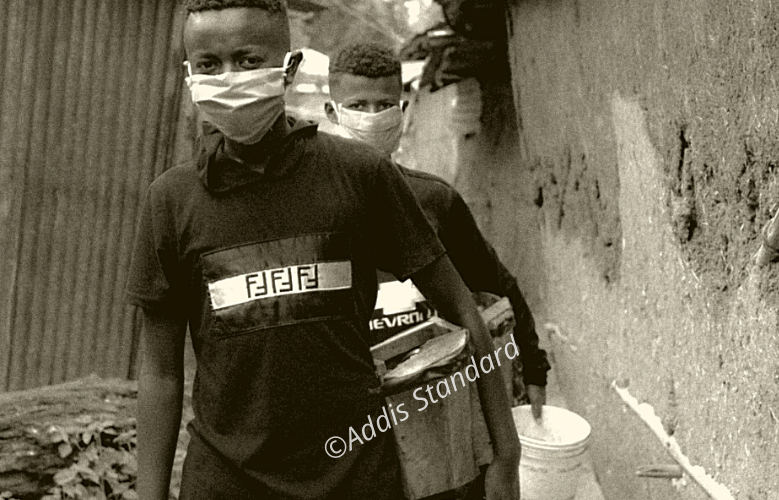Op-ed: Complacency and behavioral change in the era of the Coronavirus

By Benyam Worku, M.D. @benyam_wd
Addis Abeba, July 21/2020 – At the time of the writing of this article, close to fifteen million people have been infected by the corona virus worldwide and it has claimed the lives of more than 600,000 people.
Since the first case of COVID-19 was confirmed in Ethiopia four months back, more than 10, 000 people have been diagnosed with COVID-19 and caused the death of 170 people.
Surprisingly, or not surprisingly, depending on your point of view, the US and UK are still struggling with the pandemic and its fallout while countries such as New Zealand are emerging out of the pandemic relatively unscathed.
Public health experts and scientists are still trying to figure out which interventions have been the most successful in fighting the pandemic. So far we know most places that have managed to mitigate the spread of the virus succeeded through universal masking and avoiding the three Cs’: closed spaces with poor ventilation, crowded places with many people nearby, and close-contact settings such as close-range conversations.
With regard to Ethiopia, the long wait is over. The argument whether it is a long wait or an escape has been settled. Now the big questions are: How bad? How long? And what can be done? Despite the time afforded us by the long wait, it is obvious that we are far from the required level of public readiness.
After the initial wave of panic subsided, the number of hand washing stations is declining by the day and many people are not following physical distancing guidelines. Cafeterias are as crowded as ever. Universal masking started gaining ground only after measures were taken by law enforcement agents. However, law enforcement is apparently not well-suited for other intervention such as physical distancing and hand hygiene.
So far the media and artists have taken the lion’s share of the task of changing public perception and behavior. Almost all TV and radio stations have been extensively focusing on spreading information about the pandemic for the past 4 months. The airwaves are filled with advertisements, news, music and information that revolve around the pandemic; they have also done a lot in terms of educating and mobilizing the public.
However, despite the breif intervention from law enforcement and the continued media coverage, and consistent plea from the Minister of Health Dr. Lia Tadesse, anyone with any inkling of the public health interventions needed will be sorely disappointed by the low level of adherence to public health recommendations. This is very worrying given the state of our health system, which is far from optimal even in the best of times. The number of people in the ICU due to the coronavirus is growing at an alarming rate. Unless the growth of the pandemic is curbed sooner than later and especially if additional epicenters appear in other parts of the country, it does not take much to figure out that things might go from bad to worse in a short while.
Public health professionals, health authorities and the public are all baffled by the apparent complacency of the public; given the severity and the urgency of the situation. I have heard condemnations from every corner. It is not unusual for people to wonder, ‘what is the matter with us?’
I would like to start by reassuring everyone that this is not a uniquely Ethiopian problem. Countries all over the world have faced and are facing the same problem. Bringing about behavioral change among large swathes of the population is going to be a herculean task. Public health interventions are not only medical but also socio-cultural phenomenon, affected by culture, literacy and economics among many other factors.
In interdependent societies such as ours, individuals work with the assumption that the locus of control resides outside of their person, meaning it is unlikely for people to internalize and follow rules and regulation in the absence of external pressure. Given the value of family, community and religious institutions to our community, pushing for social distancing is always going to be an uphill battle.
Low level of literacy means that a large proportion of the population has limited understanding of the gravity of the situation and the potential impact of interventions such as wearing face masks and social distancing. It also provides a fertile ground for fake news and conspiracy theories.
The economic realities of our country is that many people, despite understanding the gravity of the situation, cannot afford to avoid places such as markets where social distancing is virtually impossible.
The fact that many people may contract the virus from someone who is yet to be symptomatic and the very prolonged lag phase of the pandemic are contributing factors for the apparent complacency of the public.
Public health authorities are waging a battle against complacency mainly through law enforcement and education. The results have been mixed. This is consistent with what we know about these two approaches in the context of pandemics. Enforcing these measures through policing is quite effective in bringing about changes that can be easily monitored by law enforcement officials such as wearing a mask in public. However, other important interventions including hand hygiene and social distancing are notoriously hard to monitor and enforce. Although education is a necessary component for behavior change, it is not sufficient.
The educational approach needs serious rethinking. For example, information regarding interventions such as face masks need to be more detailed and demonstrative. It is not easy to intuitively understand how more people using face coverings would lead to decreased rate of transmission. More forums for public discussion by professionals regarding the need and relative merits of different public health approaches are overdue. Education should also focus on addressing questions from the public as a counter strategy against fake-news and misinformation.
Dynamic communication and transparency are also important. Static messaging risks ‘information fatigue’ and the literature shows that the public actually appreciates candidness by public health officials with regard to uncertainty and fosters an environment of togetherness. We should also work on demystifying the illness, treatment centers as well as the process of quarantine. Misinformation circulating on social media and rumors can only be tackled through more information. Showing the public the insides of the isolation and quarantine centers and the process would go a long way in allaying fear.
Relying solely on education to bring about behavioral change is underpinned by the assumption that humans are rational and their decisions are results of calm deliberation. Obviously, this is not true. Humans are prone to irrationality and emotions play important and indefensible roles in decision making.
Fear and disgust are the two primary emotions that are vital for our understanding of pandemic psychology. Though usually described as negative emotions, both play irreplaceable roles in pandemics. It is up to us to explore and tame them. While potent in motivating people to action, if unchecked, fear and disgust can lead to panic and stigma.
It seems likely that for a variety of reasons both emotional systems have been under activated, resulting in apparent complacency. Appealing to our emotions is very powerful and effective. It can be accompanied by turning the spotlight on the invisiblethrough showing the effects of the virus, humanizing the ‘numbers’ and introducing new taboos and new values.
Showing the effect of the coronavirus, described by scientists as ‘the strangest and most devastating pathogen’ they have ever seen, is important. Its effects on the body are wide ranging and devastating. The physical and psychosocial impacts of the illness are rarely discussed or depicted by the media. The media needs to be more explicit about the effect of the disease. The jarring images coming out of Italy and Spain spurred many countries into action. We cannot afford to wait and see the havoc the disease would wrought among us.
Nowadays, waiting for the statistics released by the Ministry of Health is becoming a daily ritual. While indispensable, that fact of the matter is that numbers dehumanize. Numbers can tell us the number of new infections and new deaths but are not very useful when it comes to conveying suffering and sadness. The public needs to see and hear from the ‘numbers’! Recent efforts by the media to share the lived experience of people who recovered from COVID-19 should be encouraged.
The ancients did not know the causes of infectious outbreaks but were apparently aware of the possibility that some illnesses might be jumping from animals to humans. However, our taboos and prohibitions have proved less effective in the face of globalization and increasing interconnectedness.
We need to re-conceptualize the issue of taking precautionary measures as moral and civic duties. Making a conscious decision not to follow public health measures, for example not wearing a mask is not only a matter of neglecting personal safety; it is a matter of public endangerment! The person wearing the mandated face covering might be framed as a protector, thereby making the practice socially desirable; an act of solidarity!
So far Ethiopia has coped admirably well with the onslaught of the pandemic, despite limited resources. Public education and law enforcement have played a major role in promoting public health measures. However, much more public engagement in all parts of the country and among all parts of the community is needed, to effectively control the pandemic and ameliorate its effects. Focusing on behavioral change is key in this regard and grounding public health interventions and communication in behavioral science is of utmost importance in bringing about lasting behavioral change. AS
__________________________________________//_____________________________

Editor’s Note: Benyam Worku, M.D., is Assistant Professor, Department of Psychiatry, School of Medicine, College of Health Sciences, Addis Abeba University (AAU). He is also a Consultant Psychiatrist, Tikur Anbessa Specialized Hospital and Psychotherapy, Humanities, and Psychosocial Interventions Fellow, Department of Psychiatry, University of Toronto.
He can be reached at: benyam.worku@aau.edu.et







